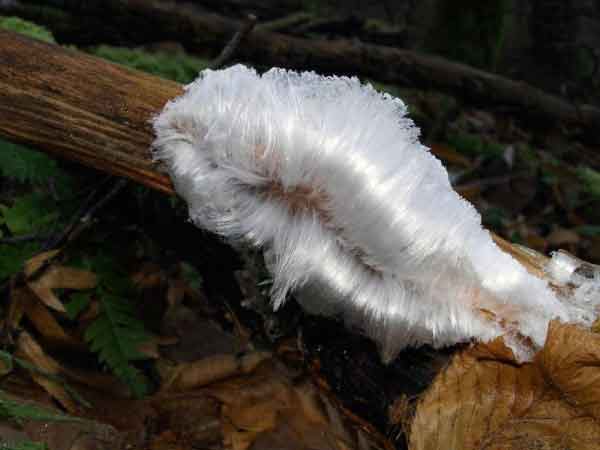
Bern, Switzerland (BBN)-There's no mystery about how the kind of hair ice that you see at a frozen hair competition comes to be- how a frozen hair competition came to be is a better question.
However, how the kind of hair ice that grows out of logs in the forest forms is a mystery that has captured the interests of scientists and others for decades, reports the Tech Times.
After stumbling across some hair ice while walking through a forest in Switzerland, a group of scientists were determined to figure out how ice forms in this peculiar shape.
It turns out that it's actually a fungus that causes the ice to grow this way, according to the report they published in the journal Biogeosciences.
"When we saw hair ice for the first time on a forest walk, we were surprised by its beauty," Christian Mätzler of the University of Bern said in a statement.
"Sparked by curiosity, we started investigating this phenomenon, at first using simple tests, such as letting hair ice melt in our hands until it melted completely."
Matzler and his colleagues were not the first to propose fungus as the cause of this phenomenon, however.
Nearly 100 years ago, Alfred Wegener- who is best known as the originator of continental drift theory- became the first scientist to study hair ice.
He noticed that the ice was coated with a web-like material that his assistant identified as mycelium, which act as the fungal equivalent of roots.
More recently, a Swiss scientist named Gerhart Wagner, who had been researching hair ice for decades, found that spraying wood with fungicide or submerging it in hot water prevented the growth of hair ice.
However, until now, no one was sure which species of fungus was involved or how it caused their hairlike ice structures to form.
Now, researchers identified the fungus as Exidiopsis effusa and confirmed that it stabilizes the thin hairs of ice in part by preventing them from recrystallizing.
"The same amount of ice is produced on wood with or without fungal activity, but without this activity the ice forms a crust-like structure," Mätzler said in a statement.
Hair ice is a rare sight, which is why it took nearly a century to confirm Wegener's hypothesis.
It grows mainly at night, and because the filaments are so thin- often just one hundredth of a millimeter in diameter- it melts very quickly once the sun rises.
Even though the mystery may be gone, hair ice is still an incredible sight.
BBN/SK/AD